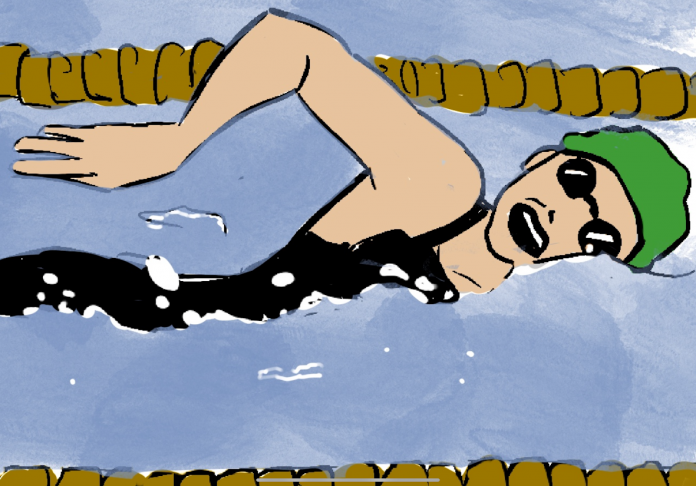Content warning: this article addresses issues originating from racism
As a campus lifeguard, one of my job responsibilities is to administer Campus Recreation’s swim test to prospective members of aquatic sports clubs, like sailing or rowing. For some students, the task is as simple as asking them to go on a light walk. For others, the swim and tread components are a valid source of anxiety.
As a lifelong swimmer myself, the question came to me: Why doesn’t the College — and most universities in the United States today — have a swim test for all of its students?
In asking this question, I am remiss in failing to address the past discriminations which complicate swimming pool accessibility across the country — and therefore the acquisition of proficient swimming skills. Like many public facilities at the time, swimming pools in the early 20th century were mostly segregated, either by law in the Jim Crow South or by societal pressure in the northern states. Regardless of region, people of color across the country often faced threats, harassment and, in far too many cases, violence from white patrons. Black patrons in particular were also thought to pose a threat to white people at swimming pools via racist stereotypes concerning hygiene and that Black men could not be trusted around white women, much less while they were in swimwear.
As public pools across the United States were subsequently integrated, “whites fled to the suburbs, where they built private, member-only pools.” Whether by expensive membership fees or requiring residence in predominantly white neighborhoods, these private pools perpetuated the exclusion of non-white people at pool facilities. As with so many of the injustices of racism, the damaging effects of these policies are still observable today: ”[a]ccording to a 2017 USA Swimming Foundation study, nearly 64 percent of Black children and 45 percent of Latino children can’t swim, compared to 40 percent of white children. The Centers for Disease Control and Prevention also reports that between 1999 and 2010, Black children drowned in swimming pools at a rate of up to 10 times higher than their white peers.” It is for these reasons that countless universities across the United States, including the College itself, removed swim tests from their requirements for graduation.
With all of this in mind, you may rightly wonder why this privileged white kid still considers swimming skills a valuable component of a well-rounded education and swim tests a requirement to consider reinstating for graduation.
First of all, swimming is a lifelong skill, and therefore one that is not subject to “missed opportunities” in regard to age, making it that much more valuable as an available method of exercise. As much as my inner nerd hates to admit, our bodies require just as much exercise as our minds in order to reach the best versions of ourselves. Plus, there are so many amazing life experiences that can be had through swimming: beaches, backyard pool parties, even snorkeling! Does a university seeking to prepare well-rounded students really wish to continue keeping such experiences out of the reach of those who did not learn from a young age how to swim?
Second, swimming is also a crucial skill that has the real potential to save lives. Put aside, for now, the fact that our campus has a large lake frequently used by students without proof of swim level. According to the Centers for Disease Control and Prevention, drowning “is one of three leading causes of unintentional injury death among persons aged ≤29 years,” and that “implementing and evaluating community-based interventions, including those promoting basic swimming and water safety skills among disproportionately affected racial/ethnic groups, could help reduce these disparities.” Thus, while I do support the verification of acquired swimming skills via a test, I believe that it would be very elitist for the College to simply force those unfamiliar with swimming to learn the necessary skills on their own, especially one which claims “belonging” as one of its core values. Prior to the COVID-19 pandemic, I remember guarding for a learn-to-swim class available even to adults at Adair Pool: why not reintroduce this program on a larger scale as part of a student’s tuition?
In its statement of values, the College also claims that one of its core values is “flourishing,” wherein it seeks to “empower those who live, learn, and work here to make choices toward a healthy and fulfilling life.” With swimming providing a lifelong opportunity for both health and fulfillment, why would the College not seek to empower students by equipping them with such beneficial skills? As a campus lifeguard, it would be my pleasure to lend my skills to whatever form that endeavor takes.
Lucas Harsche ’23 majoring in History. In addition to The Flat Hat, Lucas is also the treasurer for both Swim Club and Active Minds, and plays violin in the Symphony Orchestra. Email Lucas at lmharsche@email.wm.edu.

